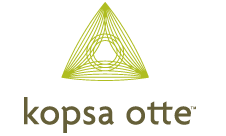The Heaths examine how to make ideas stick. And their answers hold lessons for all businesses. In fact, they've actually created a formula for launching an idea with "SUCCESs": a Simple Unexpected Concrete Credible Emotional Story. Let's look at each of these in turn:
- Simple: Strip the idea down to its core. For example, military commanders draft complex battle plans, specifying "scheme of maneuver" and "concept of fires" (what each unit will do, how it will replace munitions, and so on) even though they realize no plan survives contact with the enemy. So they also announce a broader "Commander's Intent" that lets them improvise where needed.
- Unexpected: Use surprise to engage your audience and generate interest and curiosity. For example, Nordstrom's department store trains new employees with stories about employees who ironed a shirt for a customer who needed it for a meeting that afternoon, gift-wrapped a present bought at competitor Macy's, and refunded a customer money for a set of tire chains — even though Nordstrom's doesn't sell tire chains.
- Concrete: Explain your ideas with concrete images, not abstract concepts or meaningless generalities. In the example above, Nordstrom's could brag about "world-class customer service" -- or they could make it concrete with the story about the tire chains. Which communication is more effective?
- Credible: Give your ideas credentials to impress your audience. Where possible, use authority figures, social proof, and vivid details to strengthen your case.
- Emotional: Make your audience feel something about your ideas. It's one thing to solicit money for "Save the Children." It's another thing entirely to solicit money for "Reika, a seven-year-old girl in Guatemala who was born with no fingers, who spends her days sewing blankets for the unfortunate children in her village who were born with no arms."
- Stories: Tell stories that teach your audience how to act and motivate them to do so. For example, firefighters tell their stories after every blaze as a way to share the lessons they learned.
The authors cite John F. Kennedy's 1961 call to "put a man on the moon and return him safely by the end of the decade" as a classic "sticky" idea:
"Simple? Yes. Unexpected? Yes. Concrete? Amazingly so. Credible? The goal seemed like science fiction, but the source was credible. Emotional? Yes. Story? In miniature."
And it sure sounds better than becoming "the international leader in the space industry through maximum team-centered innovation and strategically developed aerospace initiatives"!
So about how you can apply the formula to growing your business or personal life?


